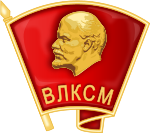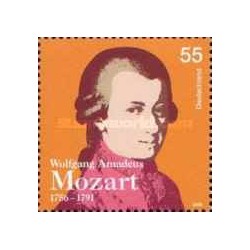- جدید
- ناموجود



توجه : درج کد پستی و شماره تلفن همراه و ثابت جهت ارسال مرسوله الزامیست .
توجه:حداقل ارزش بسته سفارش شده بدون هزینه پستی می بایست 100000 ریال باشد .
توجه : جهت برخورداری از مزایای در نظر گرفته شده برای مشتریان لطفا ثبت نام نمائید.
| All-Union Leninist Young Communist League Всесоюзный ленинский коммунистический союз молодёжи | |
|---|---|
 |
|
| Founded | October 29, 1918 |
| Dissolved | September 1991 |
| Ideology | Communism, Marxism-Leninism |
| Mother party | Communist Party of the Soviet Union |
| International affiliation | World Federation of Democratic Youth |
| Newspaper | Komsomolskaya Pravda |
The All-Union Leninist Young Communist League (Russian: Всесоюзный ленинский коммунисти́ческий сою́з молодёжи (ВЛКСМ) ![]() listen (help·info)), usually known as Komsomol (Russian: Комсомо́л, a syllabic abbreviation from the Russian kommunisticheskii soyuz molodyozhi), was a political youth organization in the Soviet Union. It is sometimes described as the youth division of the Communist Party of the Soviet Union (CPSU), although it was officially independent and referred to as "the helper and the reserve of the CPSU".
listen (help·info)), usually known as Komsomol (Russian: Комсомо́л, a syllabic abbreviation from the Russian kommunisticheskii soyuz molodyozhi), was a political youth organization in the Soviet Union. It is sometimes described as the youth division of the Communist Party of the Soviet Union (CPSU), although it was officially independent and referred to as "the helper and the reserve of the CPSU".
The Komsomol in its earliest form was established in urban centers in 1918. During the early years, it was a Russian organization, known as the Russian Young Communist League, or RKSM. During 1922, with the unification of the USSR, it was reformed into an all-union agency, the youth division of the All-Union Communist Party.
It was the final stage of three youth organizations with members up to age 28, graduated at 14 from the Young Pioneers, and at nine from the Little Octobrists.[1]



Before the February Revolution of 1917 the Bolsheviks did not display any interest in establishing or maintaining a youth division, but the policy emphasis shifted in the following months.[2] After the Russian Civil War of 1917-1922 ended, the Soviet government under Lenin introduced a semi-capitalist economic policy to stabilize Russia’s floundering economy. This reform, the New Economic Policy (NEP), introduced a new social policy of moderation and discipline, especially regarding Soviet youth. Lenin himself stressed the importance of political education of young Soviet citizens in building a new society.
The first Komsomol Congress met in 1918 with the patronage of the Bolshevik Party, despite the two organisations having not entirely coincident membership or beliefs. Party intervention in 1922-1923 proved marginally successful in recruiting members by presenting the ideal Komsomolets (Komsomol youth) as a foil to the bourgeois NEPman.[3] By the time of the second Congress, a year later, however, the Bolsheviks had, in effect, acquired control of the organisation, and it was soon formally established as the youth division of the Communist party however, the party was not very successful overall in recruiting Russian youth during the NEP period (1921-1928).
This came about because of conflict and disillusionment among Soviet youth who romanticised the spontaneity and destruction characteristic of War Communism (1918-1921) and the Civil War period.[4] They saw it as their duty, and the duty of the Communist Party itself, to eliminate all elements of bourgeois culture from society. However, the NEP had the opposite effect: after it started, many aspects of bourgeois social behavior began to reemerge.[5] The contrast between the "Good Communist" extolled by the Party and the bourgeois capitalism fostered by NEP confused many young people.[6] They rebelled against the Party's ideals in two opposite ways: radicals gave up everything that had any bourgeois connotations, while the majority of Russian youths felt drawn to the Western-style popular culture of entertainment and fashion. As a result, there was a major slump in interest and membership in the Party-oriented Komsomol.
In March 1926, Komsomol membership reached a NEP-period peak of 1,750,000 members: only 6 percent of the eligible youth population.[7] Only when Stalin came to power and abandoned the NEP in the first Five Year Plan (1928–1933) did membership increase drastically.[8]
The youngest people eligible for Komsomol membership were fourteen years old. The upper age-limit for ordinary personnel was twenty-eight, but Komsomol functionaries could be older. Younger children joined the allied Vladimir Lenin All-Union Pioneer Organization. While membership was nominally voluntary, those who didn't join lost access to officially sponsored holidays and found it very difficult (if not impossible) to pursue higher education.
Komsomol had little direct influence on the Communist Party or on the government of the Soviet Union, but it played an important role as a mechanism for teaching the values of the CPSU to youngsters. The Komsomol also served as a mobile pool of labor and political activism, with the ability to relocate to areas of high-priority at short notice. Active members received privileges and preferences in promotion. For example, Yuri Andropov, CPSU General Secretary (1982-1984) in succession to Leonid Brezhnev, achieved political importance through work with the Komsomol organisation of Karelia in 1940-1944. At its largest, during the 1970s, the Komsomol had tens of millions of members; about two-thirds of the present[when?] adult population of Russia is believed[by whom?] to have joined.
During the early phases of perestroika in the mod-1980s, when the Soviet authorities began cautiously introducing private enterprise, the Komsomol received privileges with respect to initiating businesses, with the motivation of giving youth a better chance.[citation needed] The government, unions and the Komsomol jointly introduced Centers for Scientific and Technical Creativity for Youth (1987). At the same time, many Komsomol managers joined and directed the Russian Regional and State Anti-Monopoly Committees. Folklore quickly coined a motto: "Komsomol is a school of Capitalism", hinting at Vladimir Lenin's "Trade unions are a school of Communism".
The reforms of Mikhail Gorbachev, perestroika and glasnost, finally revealed that the quality of Komsomol management was bad.[citation needed] The Komsomol, long associated with conservatism and bureaucracy, had always largely lacked political power. The radical Twentieth Congress of the Komsomol (April 1987) altered the rules of the organisation to represent a market orientation.[citation needed] However, the reforms of the Twentieth Congress eventually destroyed the Komsomol, with lack of purpose and the waning of interest, membership and quality of membership. At the Twentysecond Congress of the Komsomol in September 1991, the organisation disbanded. The press organ of the Komsomol, the Komsomolskaya Pravda, survived the organisation and still exists (as of 2015[update]).
A number[quantify] of youth organisations of successor parties to the CPSU continue to use the name Komsomol, as does the youth organisation of Ukrainian communists: Komsomol of Ukraine.





Not only was the ideal Communist youth an asset to his (or her) organisation, but he also “lived correctly”. This meant that every aspect of a Komsomolets’s life was in accordance with Party doctrine. Smoking, drinking, religion, and any other activity the Bolsheviks saw as threatening were discouraged as “hooliganism”. The Komsomol sought to provide them with alternative leisure activities that promoted the improvement of society, such as volunteer work, sports, and political and drama clubs.[9] These efforts proved largely unsuccessful, since the Bolshevik Party and the Komsomol were not in touch with Soviet youths’ desires and thus were not able to manipulate them. Soviet youth remained relatively politically unaware or uninterested during the NEP period.[10]
Many youths were drawn to “hooliganism” and the Western bourgeois culture of entertainment, which included cinema and fashion magazines. It is no coincidence that these youths were primarily from the peasantry or working class. They saw Western culture as a way to elevate or distinguish themselves from their humble beginnings.[11] The Soviet authorities eventually made their own films with ideologically “pure” messages, but it was not the same. Soviet pictures, which were often informational or political, lacked the draw of Westerns or romances from Hollywood.[12] Both the authorities and the youths themselves blamed the NEP for corrupting Soviet youth culture. Because the Komsomol was simply not as attractive to these young men and women, the government began to limit their cultural and entertainment options. This signalled the end of the NEP, and the end of the brief influx of Western culture in Soviet Union before Stalin’s ascendancy.[13]
Militant young Communists were a threat to the older Bolsheviks because they had the potential to undermine the new, NEP-based society. The shift from destruction of an old state to creation of a new one, mirrored by the shift from War Communism to the NEP, was necessary to maintain and stabilise the Bolshevik regime. The Party’s disapproval of young militants was necessary in order not only to define what was considered proper behavior, but also to maintain social and political control over the masses. However, after Stalin came to power and the NEP was abandoned in favor of the revolutionary, anti-bourgeois Five-Year Plans, many of the young radicals’ ideas were absorbed back into the mainstream and they no longer presented a problem.[14]
Soldiers returning from the Civil War, students in provincial towns, and workers fleeing the poverty of the cities established the first rural Komsomol cells in 1918. Most administrators, who wanted to retain the “proletarian character” of the organization, did not initially welcome peasants into the Komsomol. However, it soon became obvious that peasants were too large a part of the population (80%) to ignore. Also, peasants, who were benefiting from the NEP’s compromise with small producers, were in a better position to join than workers, who struggled with unemployment and other economic problems and thus had less interest in joining.
Older peasants reacted negatively to the growth of the Komsomol in rural areas. They saw the administrators as intruders who prevented their children from fulfilling their family obligations. The Komsomol needed full-time commitment, and peasant youths, who saw it as a chance for social mobility, education, and economic success, were willing to abandon their traditional duties to join. At the end of NEP, the majority of Komsomol members were peasants, while the administration remained largely urban.[15]
تشکر نظر شما نمی تواند ارسال شود
گزارش کردن نظر
گزارش ارسال شد
گزارش شما نمی تواند ارسال شود
بررسی خود را بنویسید
نظر ارسال شد
نظر شما نمی تواند ارسال شود

check_circle
check_circle















